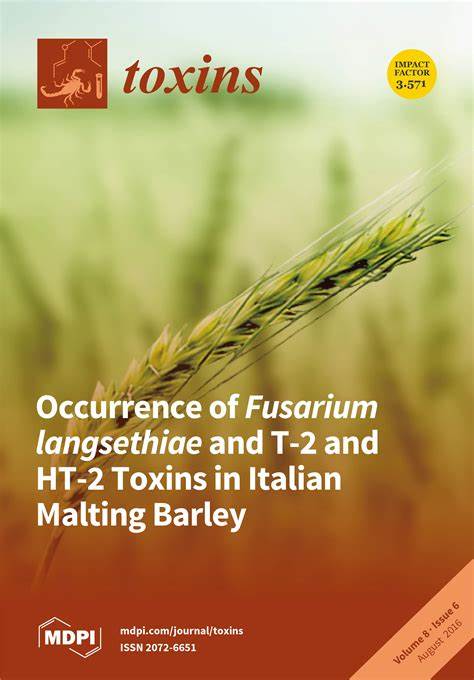Cry1Ja 在转基因昆虫控制方面的用途
IF 3.9
3区 医学
Q2 FOOD SCIENCE & TECHNOLOGY
引用次数: 0
摘要
昆虫控制性状是提高虫害防治效果和最大限度地提高种植者作物产量的关键组成部分。事实证明,基于苏云金芽孢杆菌(Bt)表达的蛋白质的昆虫性状是实现这一目标的非常有效的工具。遗憾的是,昆虫的适应性导致其对目前商业产品中的某些蛋白质产生抗药性。因此,需要与目前使用的产品相比,具有不同作用模式(MoA)的新杀虫性状。Cry1Ja 对多种鳞翅目昆虫具有良好的杀虫活性,在植物体内表达可提供强大的保护,防止昆虫取食。对于 Bt 蛋白来说,不同的 MoA 是由它们在昆虫中肠中的结合位点决定的。在本研究中,使用来自 Helicoverpa zea、Spodoptera frugiperda 和 Chrysodeixis includens 的刷状缘膜囊泡 (BBMV) 进行了竞争性结合试验,以评估 Cry1Ja 相对于目前用于保护鳞翅目昆虫的商业产品中表达的各种 Bt 蛋白的 MoA。这项研究强调了三种昆虫共有的 Cry 蛋白结合位点的差异、Cry1Ja 对抗性 Cry1Fa 的一窝蜂的生物活性以及对目标害虫的植物药效。这些数据说明了 Cry1Ja 在昆虫新性状开发方面的潜力。本文章由计算机程序翻译,如有差异,请以英文原文为准。
Utility of Cry1Ja for Transgenic Insect Control
Insect control traits are a key component of improving the efficacy of insect pest management and maximizing crop yields for growers. Insect traits based on proteins expressed by the bacteria Bacillus thuringiensis (Bt) have proven to be very effective tools in achieving this goal. Unfortunately, the adaptability of insects has led to resistance to certain proteins in current commercial products. Therefore, new insecticidal traits representing a different mode of action (MoA) than those currently in use are needed. Cry1Ja has good insecticidal activity against various lepidopteran species, and it provides robust protection against insect feeding with in planta expression. For Bt proteins, different MoAs are determined by their binding sites in the insect midgut. In this study, competitive binding assays are performed using brush border membrane vesicles (BBMVs) from Helicoverpa zea, Spodoptera frugiperda, and Chrysodeixis includens to evaluate the MoA of Cry1Ja relative to representatives of the various Bt proteins that are expressed in current commercial products for lepidopteran insect protection. This study highlights differences in the shared Cry protein binding sites in three insect species, Cry1Ja bioactivity against Cry1Fa resistant FAW, and in planta efficacy against target pests. These data illustrate the potential of Cry1Ja for new insect trait development.
求助全文
通过发布文献求助,成功后即可免费获取论文全文。
去求助
来源期刊

Toxins
TOXICOLOGY-
CiteScore
7.50
自引率
16.70%
发文量
765
审稿时长
16.24 days
期刊介绍:
Toxins (ISSN 2072-6651) is an international, peer-reviewed open access journal which provides an advanced forum for studies related to toxins and toxinology. It publishes reviews, regular research papers and short communications. Our aim is to encourage scientists to publish their experimental and theoretical results in as much detail as possible. There is no restriction on the length of the papers. The full experimental details must be provided so that the results can be reproduced.
 求助内容:
求助内容: 应助结果提醒方式:
应助结果提醒方式:


